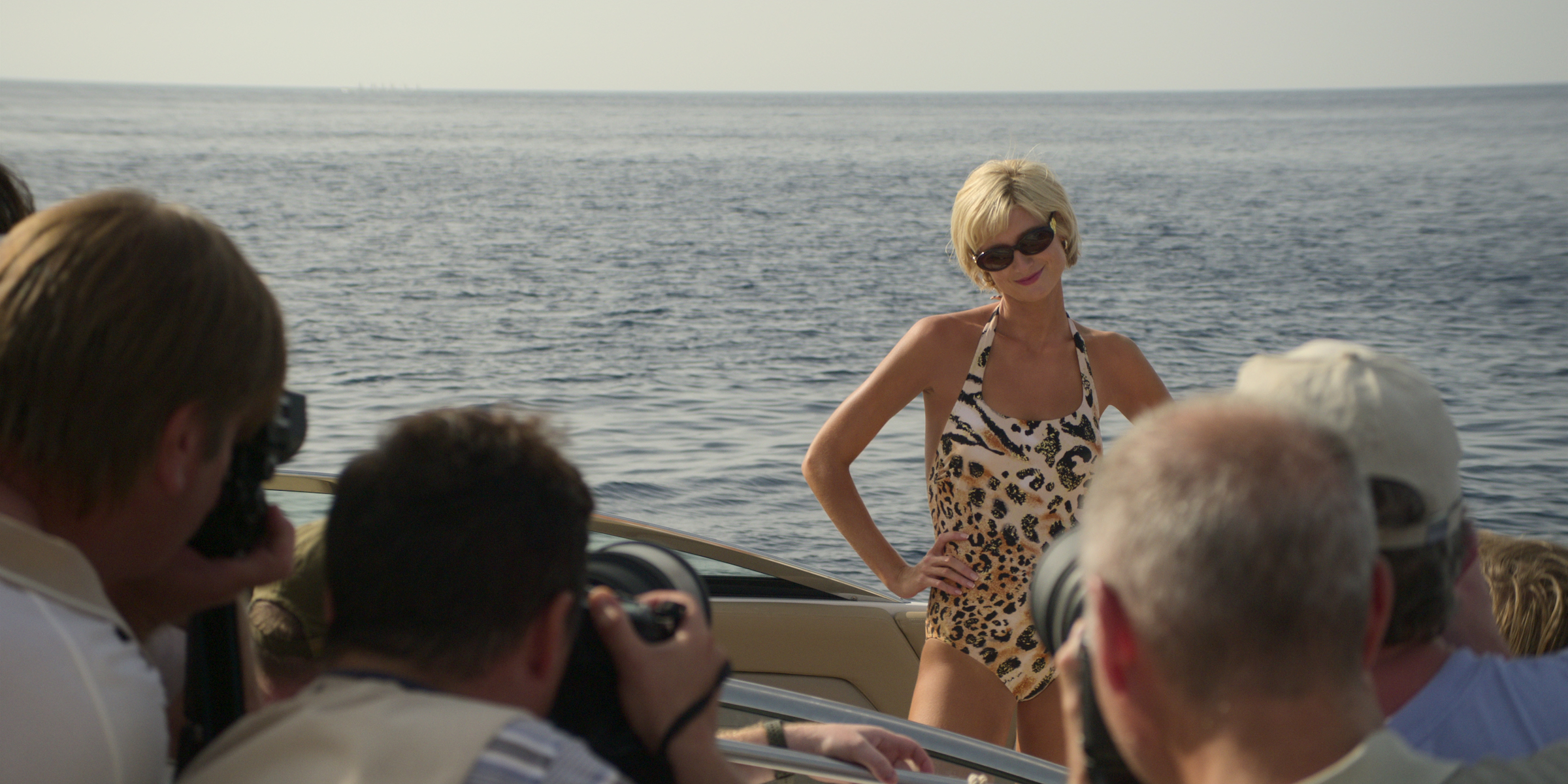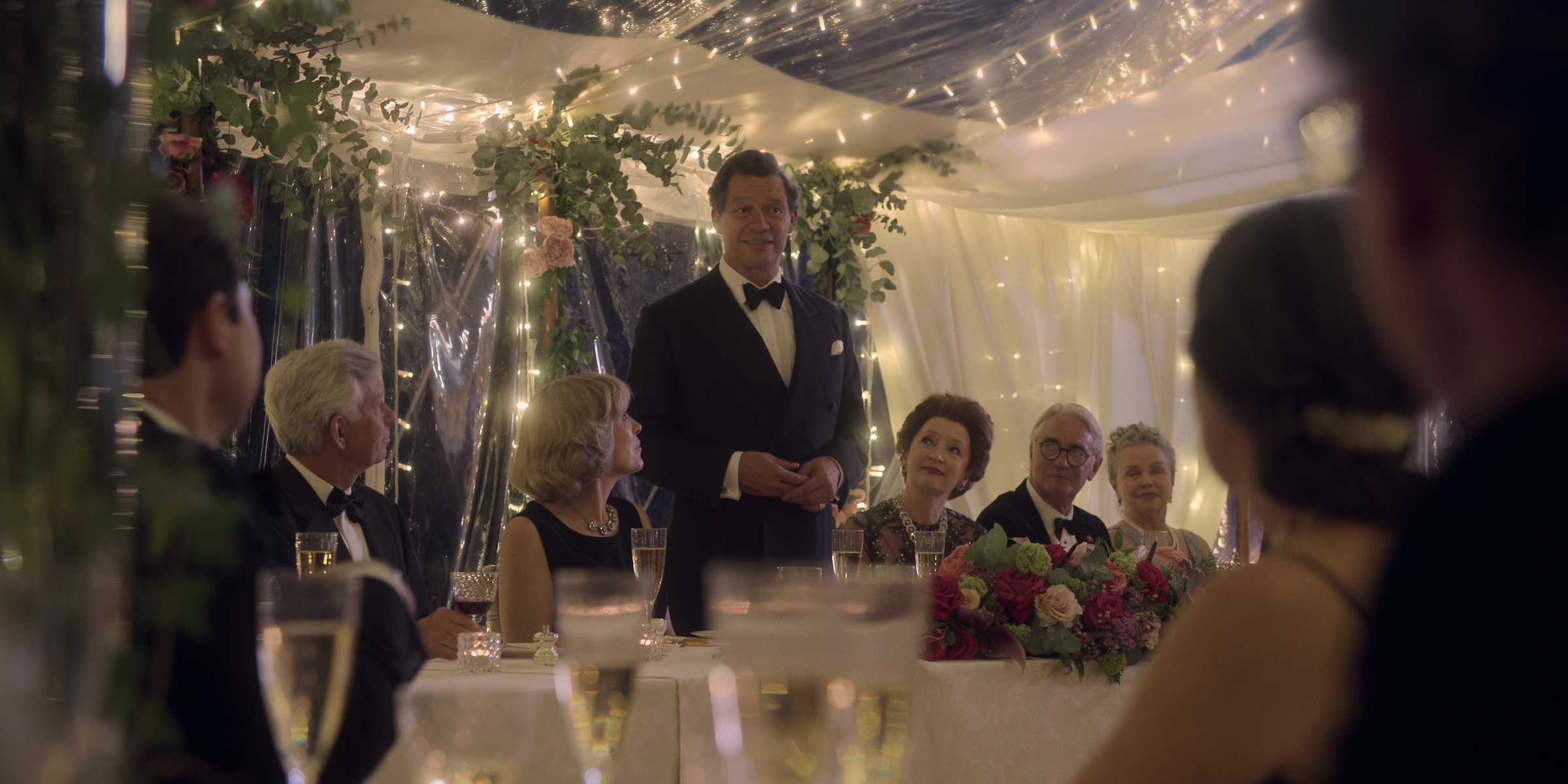The widely anticipated final season of The Crown, which dropped its first four episodes on Nov. 16, picks up with the 1997 car crash that saw Princess Diana (Elizabeth Debicki) and Dodi Fayed (Khalid Abdalla) fatally pursued by paparazzi in Paris, and largely deals with its historic fallout. As the storyline jumps back eight weeks prior to the accident, the drama further unpacks the royal family’s tumultuous relationship with the media, in this instance the invasive practices of paparazzi during a defining period in British tabloid culture. It also portrays the deliberate use of photo opportunities to shape public perception at large.
One such paparazzo depicted in the show is Mario Brenna, an Italian photographer who rose to prominence for his work with luxury fashion houses and photographs of Mediterranean high society. But Brenna's career-defining moment arrived when he captured the first photographs of Diana and Dodi embracing on a yacht off the coast of Sardinia in the summer of 1997.
Viewers are introduced to Brenna (played by Enzo Cilenti) in episode 2 during a sit-down interview about his profession. “Everyone wants pictures of celebrities. Pictures that show famous people. They are no different, just like us. Making mistakes just like us,” the character says in a lengthy monologue. “People pay one, two hundred thousand dollars for the right shot. But the right shot is hard to get. You have to be like hunters. Killers.”
“There was this symbiotic relation with the press that Diana had,” royal historian Richard Fitzwilliams tells TIME. “The royals need certain images to get their points across… but it’s a desperately dangerous game.”
While Brenna was not the only paparazzo who pursued Diana’s image over the years, he was among the best paid. Here’s what to know about his role in Diana’s final weeks, and the royal family’s wider relationship with photography.
Read more: The Crown Hits a Disappointing New Low in Its Maudlin Sixth Season
Who was the real Mario Brenna?
Brenna, then 40 years old and based in Monaco, had primarily worked as the official photographer of fashion houses such as Versace before he captured the candid image of Diana and Dodi on the latter’s family yacht on Aug. 4, 1997.
Brenna, seemingly in the right place at the right time to take the lucrative photo, was completing another assignment nearby. But disputed reports claim that Diana called Brenna herself to stage the photo opportunity. Tina Brown writes in her 2022 book The Palace Papers, “Time and again, Diana chose to invade her own privacy, often for the capricious reason of making the men in her life jealous.” Discussing this photograph, she writes: “It was she who tipped off Italian lensman Mario Brenna—to send a taunting message to the real love of her life, Hasnat Khan.” Khan was a Pakistani heart surgeon who dated Diana for two years, and who many believe Diana still held affection for at her time of death.
The tabloids began an intense bidding war over the first photo of the couple’s budding romance, with the Sunday Mirror earning rights to print it on their front cover on Aug. 10, under the headline “The Kiss.” The newspaper also fueled rumors about Dodi buying an engagement ring for Diana, and wrote: “Locked in her lover’s arms, the princess finds happiness at last.”
The Los Angeles Times reported that Brenna earned up to $5 million for world rights to the image.
Following the first visual insight into the couple’s relationship, other members of the paparazzi ramped up their efforts to secure their own big payout by capturing the couple’s next big moment. A 2006 report from the British metropolitan police states that Brenna’s photograph sparked these efforts. “Not only did this photograph appear to draw media attention to the couple, it is believed that the amount of money reportedly earned by Brenna focused the attention of the paparazzi,” the report reads.
Brenna has largely stayed out of the public eye since the whirlwind of attention in 1997, though he did speak about photographing the royal during an interview on an Italian news program in 2017.
Read More: The Princess and the Paparazzi: How Diana's Death Changed the British Media
How was Diana affected by the paparazzi more broadly?

The paparazzi’s relentless pursuit of Diana is well documented, and many blame the industry for her death on Aug. 31, 1997, in the Pont de L’Alma tunnel in Paris. Dodi and their driver, Henri Paul, also died in the crash.
At Diana’s funeral days later on Sept. 6, her brother Charles Spencer delivered a speech that implicitly placed responsibility at the hands of the paparazzi, calling his sister “the most hunted person of the modern age.” Over the years, Prince Harry has also been unequivocally vocal about the role photographers played in his mother’s death.
But royal observers note that, while the chase resulted in devastating consequences for Diana, and she often expressed a desire to leave the U.K. for a more private life, her relationship with the press was often more nuanced than a game of cat and mouse.
“There’s no doubt there was a problem of privacy for the [then] Princess of Wales, but on the other hand she used the press. One thinks of the famous Serpentine Gallery little black dress image, or posing alone in front of the Taj Mahal,” Fitzwilliams says. He adds that Diana was often able to use the public’s fascination to bring attention to her humanitarian causes such as addressing HIV stigma and advocating against landmines.
Fitzwilliams notes that Diana likely leaned into her relationship with the media when she wanted to communicate something. “She was intending to make a statement that she seemed to have… found freedom,” Fitzwilliams says. But at times her personal life could overshadow her humanitarian work. “The Kiss” photograph was published while Diana was in Bosnia-Herzegovina connecting with victims of landmines, and the media frenzy temporarily eclipsed her advocacy efforts.
What was Charles’ relationship with photography?

The Crown depicts King Charles, then Prince of Wales, grappling with public perception of him as a father and seeking to improve the way Camilla was received. In July 1997, Charles hosted a 50th birthday party for Camilla, which is depicted in episode 1 as Charles struggles to get members of the royal family to attend.
“As far as Charles is concerned, he was never especially good at public relations” says Fitzwilliams, noting the royal’s interview with Jonathan Dimbly in 1994 where he admitted to having an extramarital affair. Fitzwilliams argues that the most defining photographs of Charles as a prince often featured Diana, while Diana’s were of her alone.
After the couple’s separation, Charles used photo opportunities to redefine himself. In one such instance, as depicted in episode 2, Charles staged a photocall with William and Harry taken by Scottish photographer Duncan Muir on the banks of the River Dee at Balmoral. In the episode, an advisor to the prince suggests playing up the optics of Diana as a “tabloid princess as opposed to a broadsheet prince.”
There is also an element of giving something to the media and public, to earn privacy in return. “You have to feed the beast to some extent,” says Fitzwilliams. No clearer is this in The Crown than when Diana is on holiday with her children in Saint-Tropez and approaches a fleet of photographers on a speedboat to deliver an impromptu press conference she hopes will incentivize their departure. “You leave me and my boys alone please, and you’re going to get a big surprise with the next thing I do," her character says. As history tells, the paparazzi intensified their pursuit of Diana on her next holiday.
More Must-Reads from TIME
- Caitlin Clark Is TIME's 2024 Athlete of the Year
- Where Trump 2.0 Will Differ From 1.0
- Is Intermittent Fasting Good or Bad for You?
- The 100 Must-Read Books of 2024
- Column: If Optimism Feels Ridiculous Now, Try Hope
- The Future of Climate Action Is Trade Policy
- FX’s Say Nothing Is the Must-Watch Political Thriller of 2024
- Merle Bombardieri Is Helping People Make the Baby Decision
Write to Armani Syed at armani.syed@time.com